The Australian Bureau of Statistics (ABS) today released the national accounts for the December quarter, which registered weak 0.2% growth in real GDP over the quarter and 2.3% growth over the year.
On a per capita basis, real GDP fell by 0.2% over the quarter, which follows the September quarter’s 0.1% fall, meaning Australia is now experiencing a recession in per capita terms.
Most importantly for Australian workers, average compensation per employee rose by just 1.5% in the year to December, and remained negative after adjusting for inflation (1.8%).
According to the ABS, seasonally adjusted GDP growth for the quarter was driven by public consumption spending, which contributed 0.3% percentage points:
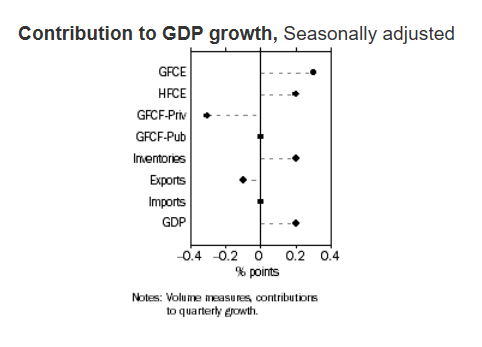
Quarterly final demand, which excludes export volumes, rose by 0.3% over the December quarter, driven largely by VIC (+0.6%) and QLD (+0.9%), whereas NSW (-0.1%) and WA (-0.3%) fell:
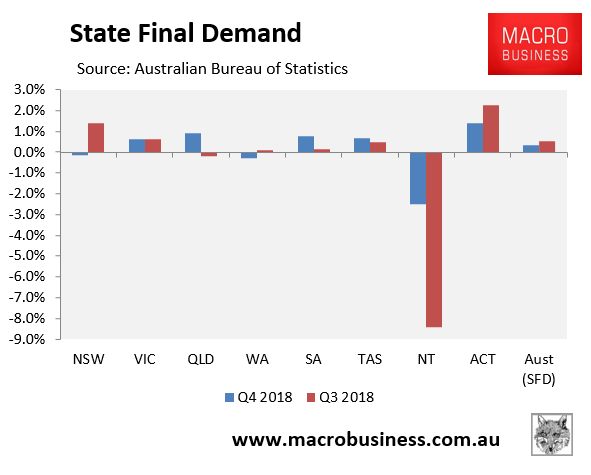
In the year to December 2018, final demand growth was soft, growing by 2.5% nationally. However, the mining strongholds continue to struggle:
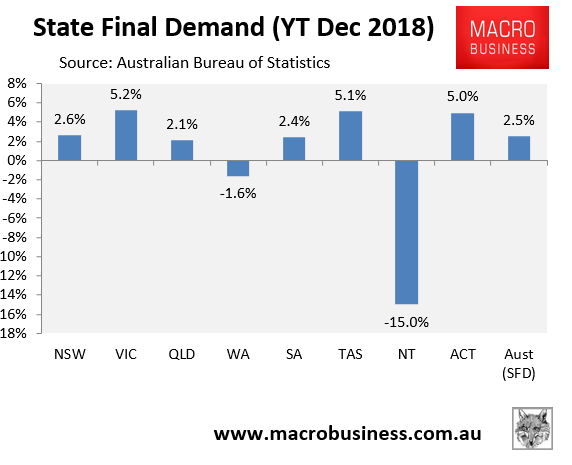
The terms-of-trade jumped by 3.2% over the quarter in seasonally adjusted terms and by 1.2% in trend terms. Over the year it rose by 6.1% in seasonally adjusted terms and by 4.1% in trend terms:
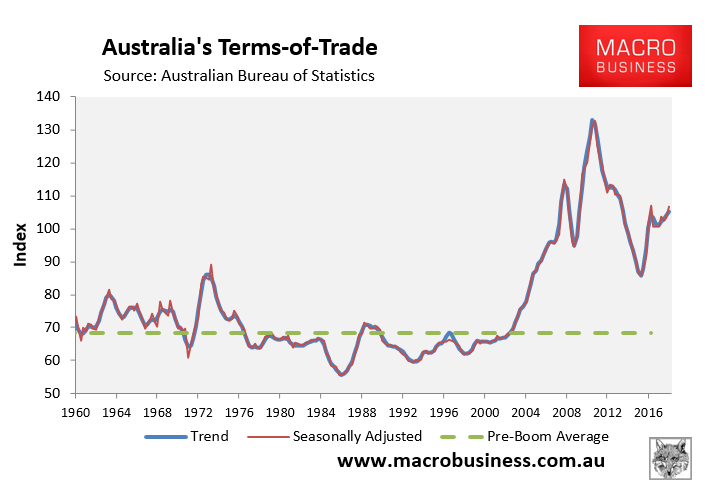
The strong lift in the terms-of-trade helped boost national income growth, with real NDI rising by 1.2% over the quarter and by 3.7% over the year.
After population growth, per capita NDI rose by 0.8% over the quarter and rose by just 2.1% over the year.
However, in trend terms, since December 2011, per capita NDI has risen by just 0.9% versus 6.7% growth in real per capita GDP:
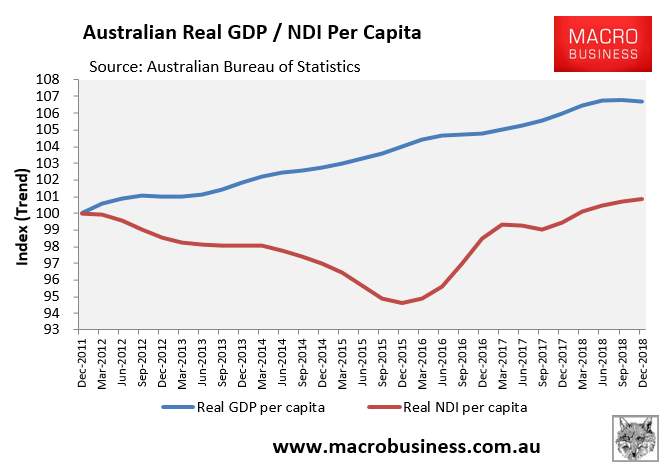
As noted above, average compensation of employees remains in the gutter. It rose by a measly 0.4% in the December quarter in nominal terms and was up just 1.5% in the year to December 2018:
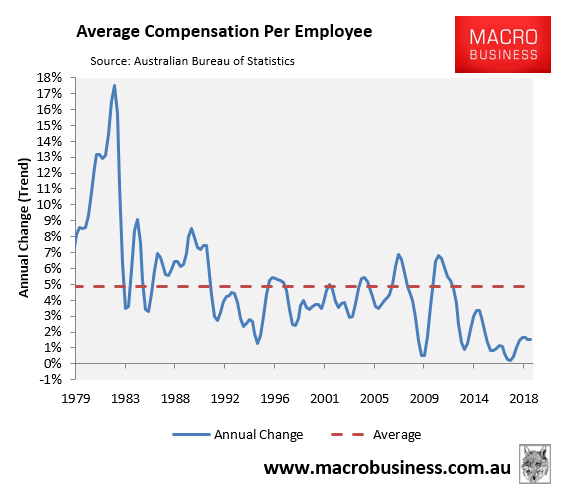
Adjusting for inflation, the situation facing Australian workers is even worse, with real average compensation falling – down 0.3% year-on-year and by 4.8% since March 2012:
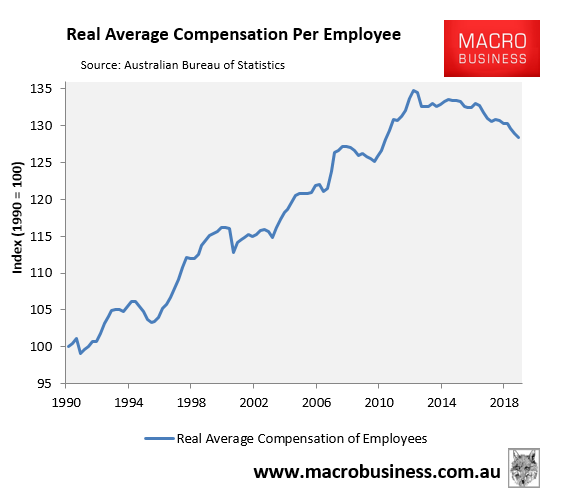
After falling recently, nominal GDP rebounded some more in the December quarter, rising by 1.2% over the quarter but just 5.5% over the year:
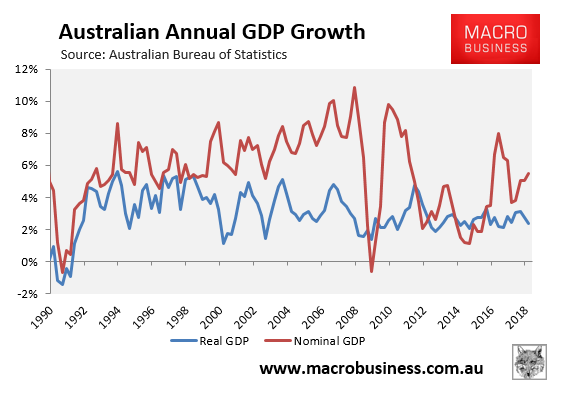
The below chart shows that trend nominal GDP is again tracking well below the average since 1990, which continues to make life challenging for Government finances:
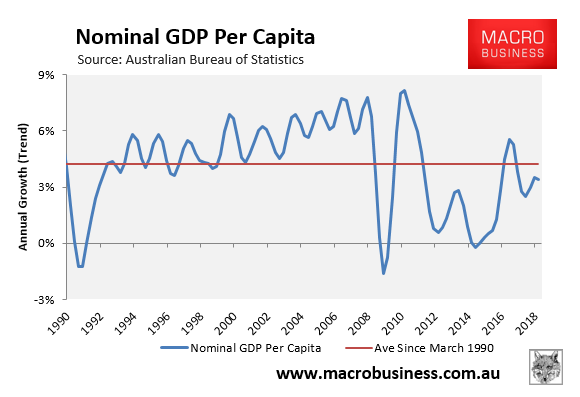
After rebounding last quarter, real GDP per hour worked fell for the third consecutive quarter, down by 0.2% in the December quarter and was up only 0.8% over the year, suggesting sluggish labour productivity:
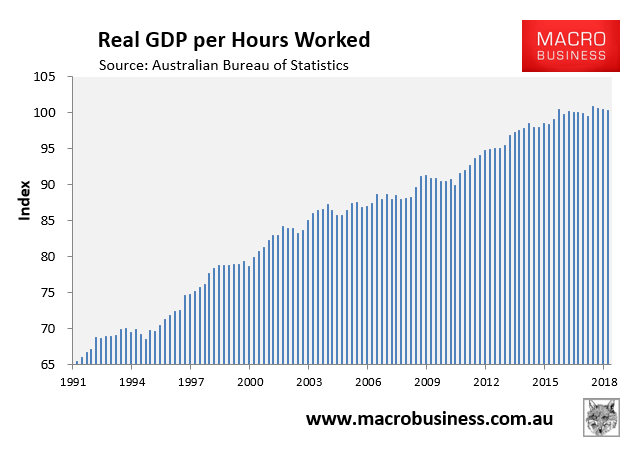
Meanwhile, the household savings ratio recovered slightly, rising by 0.2% to 2.5% – but remains near the lowest level in the post-GFC era:
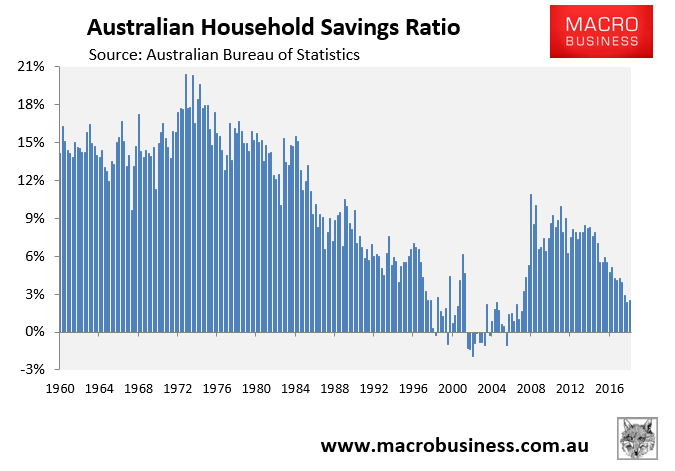
In summary, not only is the headline growth figure weak, and the Australian economy is experiencing a per capita recession, but there is further trouble under the hood.
First, Australian workers’ incomes remain in the gutter, with the average compensation of employees continuing to fall in the year to December when adjusted for inflation:
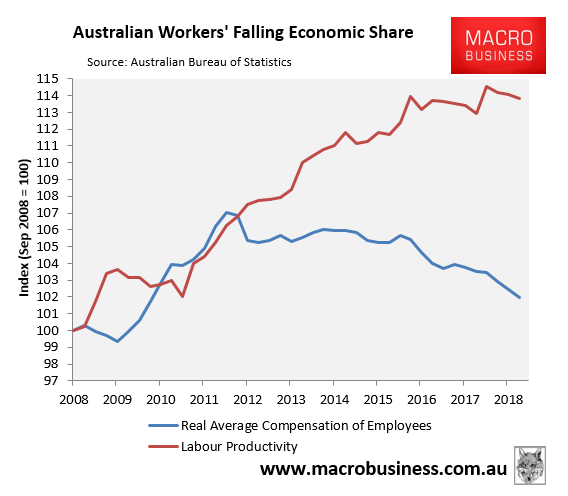
Second, notwithstanding the tiny rise in the December quarter, households have been running down their savings. This is clearly an unsustainable support to household consumption, which is the main contributor to domestic demand.
Third, Australia’s 10-year annualised growth in per capita GDP continues to track near its lowest level on record – i.e. around levels seen during the 1980s and early-1990s recessions:
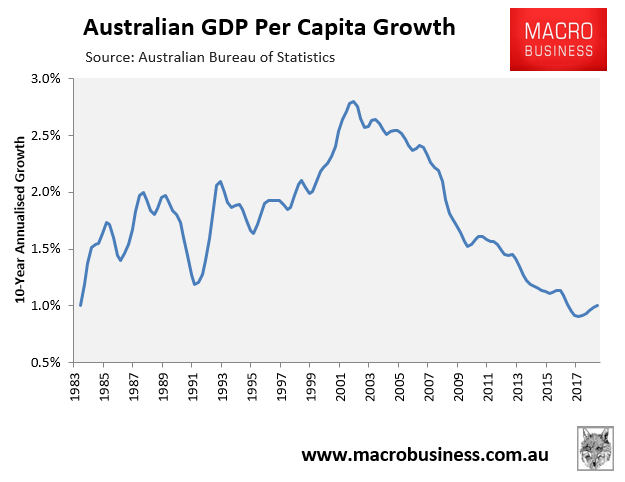
Fourth, labour productivity is weak, as evident by sluggish growth in GDP per hour worked.
Finally, Australia’s growth is being driven largely by public (taxpayer) expenditure, rather than the private sector, which is ultimately unsustainable.
So, while there is still the ‘illusion’ of growth at the aggregate economy level, thanks to force-fed mass immigration and government spending, along with debt-fuelled consumption, the situation facing ordinary workers remains glum.
This is Australia’s ponzi economy in action: everyone’s share of the economic pie is not increasing sufficiently, real wages are going backwards, and living standards in the big cities are being crush-loaded by the never ending people flood.

